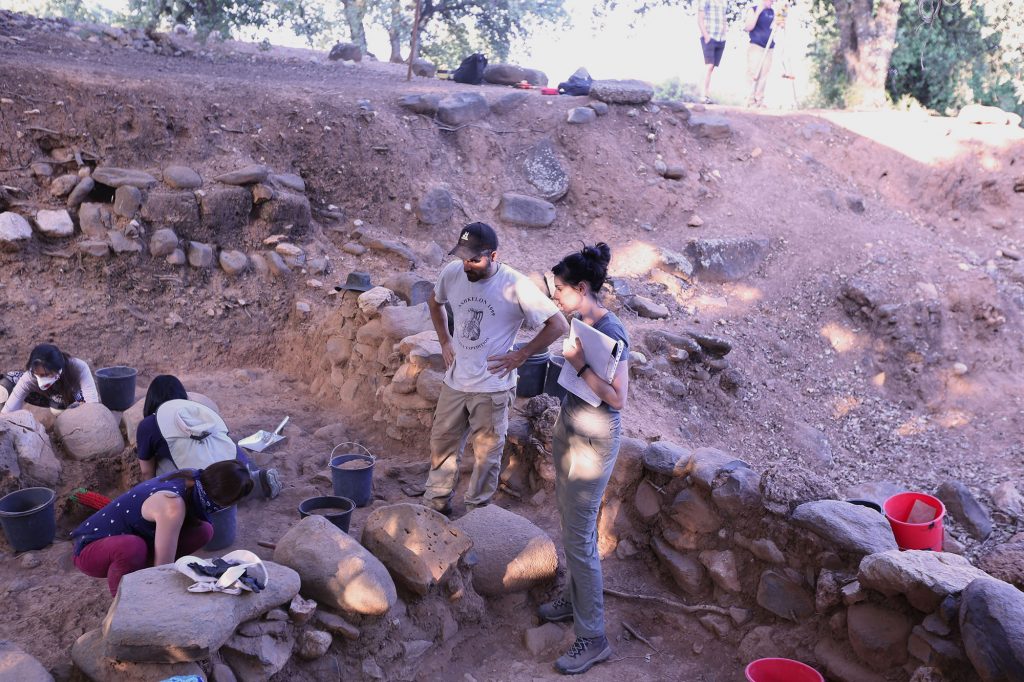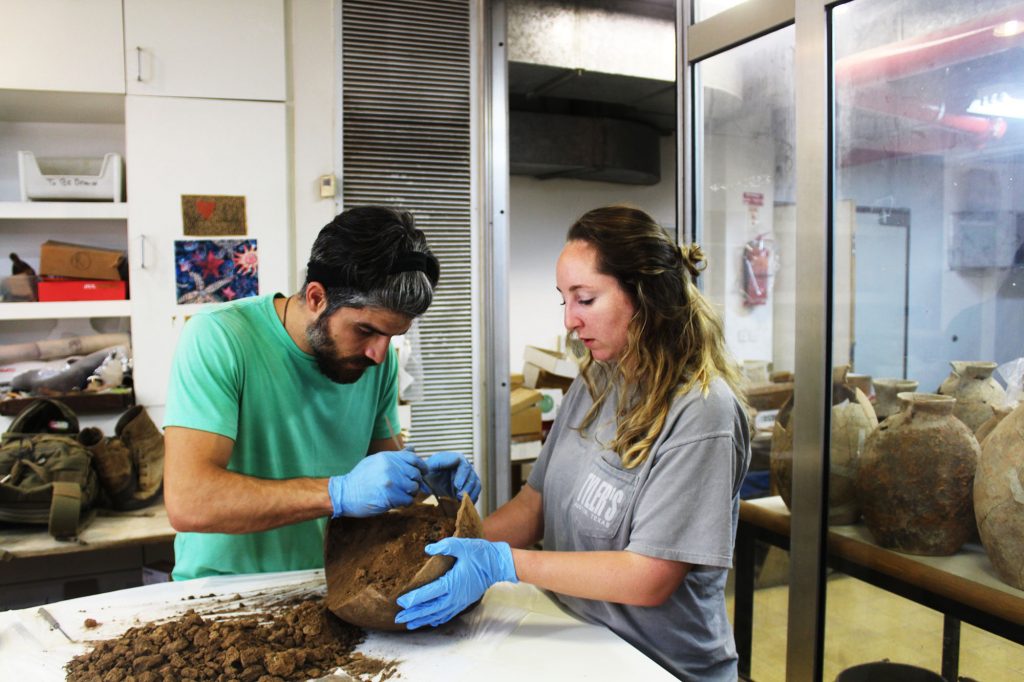by Aaron Burke
Professor of the Archaeology of Ancient Israel and the Levant
UCLA Department of Near Eastern Languages and Cultures
Warlords, mercenaries, violence, migration, refugees, climate change, famines, and pandemics. Although you are likely to think first about each of these as major themes in recent history, they are, however, also central elements in the tumultuous decades around 1200 to 1000 BCE in the Eastern Mediterranean. Out of this period emerged early Israel, culminating in the establishment of the biblical monarchy. Although much of twentieth century scholarship sought to distance itself from discussions of many of these issues, viewing them as part of catastrophism as an explanatory framework, which—at least superficially—appears to diminish human agency from a role in these responses. Recent events, however, have underscored the importance of these themes to understanding the historical context of early Israel, and the reality that human responses to such events are fundamental to the constitution of social identity.

UCLA Leve Center scholarship recipients Nadia Ben-Marzouk and Jacob Damm
consult in the field during the 2018 Tel Dan excavations.
Between 2007 and 2017, I conducted archaeological research in Jaffa, Israel on the south side of Tel Aviv, where I established the Jaffa Cultural Heritage Project. During our excavations, we identified an Egyptian fortress and harbor founded in the early fifteenth century BCE that was later violently destroyed in the late twelfth century, not once but twice in quick succession. For the first time, archaeological work provided clear evidence for local resistance to Egypt’s New Kingdom military presence in Canaan and an approximate date for the demise of its control. Of central importance to Egyptian imperial rule, it served three and half centuries, but by 1125 BCE lay destroyed and was abandoned.
While at first such a narrative appears unconnected to questions of Israel’s emergence as Jaffa plays no central role in biblical narratives, to neglect to reconcile the spatial and chronological intersections of these issues—as has been largely done to date—is to neglect an important line of inquiry. While the biblical Exodus places importance on Israel’s departure from Egypt, the archaeological evidence for this period tells of the dramatic departure of Egypt from Canaan. Not surprisingly then, our findings left me with some important questions. How, for example, should we reconcile these historical developments with biblical accounts of contemporaneous events, including the long and, frankly, violent transition from warlordism to Israelite kingship by the end of the eleventh century BCE?
In the prevailing consensus that is informed by biblical narratives, Saul founded his dynasty in the second half of the eleventh century on the heels of the rule of warlords called judges in the bible (see the book of Judges). This was followed immediately thereafter by the rise of David, whose employ of “mighty men” and mercenaries, and his predominant reliance on warfare is a central element of the establishment of his rule (see 2 Samuel). So how is it that this narrative can so aptly characterize a post-imperial age and yet so clearly neglect any direct reference to the cataclysmic changes that preceded it in this region? How do we reconcile the text’s silence on Egypt’s departure?

UCLA students Jacob Damm (Leve Center scholarship recipient) and Amanda Bauer
sample an early Iron Age storejar from Tel Dan’s 2018 excavations.
These are not easy questions to answer, and they cannot be addressed in a single research paper, and almost certainly not by a single individual’s research. But they are just the type of questions that have emerged in recent years, after 40 years of virtually no archaeological field research devoted to exploring Israel’s origins. In an effort to begin to address them, in 2017 I began a collaboration called Turning Points (read more). The aim of this new endeavor is to undertake a multi-spectral and interdisciplinary approach to the archaeological and historical context of this transitional period, and by extension to consider the importance of such phenomena for other places and times. On the one hand, for this research the biblical texts offer a unique and quite detailed view of this period in Canaan, with much potential for further exploration of the various questions they raise. A rereading of them reveals the presence of Egyptian, Nubian (Kushite), and Mediterranean individuals but whose stories in this transition were, of course, not of principal concern to biblical authors. On the other hand, archaeological analyses permit closer exploration of the origin, composition, and identity of these communities in transition. One significant aspect of this research is the likelihood that early Israel’s identity was, at least in part, a pastiche of the experiences of and cultures represented by refugee communities that settled in Canaan’s highlands during the decline of Egyptian power, Israel’s “mixed multitude” (see Exodus).
As the project progresses, I and my collaborators are exploring various avenues toward investigating this pivotal transition in the ancient Near East and Mediterranean, and everything it meant for the context of ancient Israel’s rise. In summer 2021—after our interrupted 2020 season—we will resume archaeological fieldwork at Tel Dan in northern Israel, where an early Iron Age community is revealing the presence of various cohabitating communities that were a part of early Israel’s history—Canaanite, Cypriot, Aegean, and Egyptian.
Read Further
Burke, Aaron A.
2018 The Decline of Egyptian Empire, Forced Migration, and Social Change in the Southern Levant, ca. 1200–1050 B.C. In The Archaeology of Forced Migration: Conflict-Induced Movement and Refugees in the Mediterranean at the End of the 13th c. BC edited by J. Driessen, pp. 229–249. AEGIS Archéologie du monde minoen, Presses Universitaires de Louvain, Louvain-la-Neuve. https://www.academia.edu/33930209.
Burke, Aaron A., Katherine S. Burke, and Martin Peilstöcker (eds.)
2017 The History and Archaeology of Jaffa 2. The Jaffa Cultural Heritage Project 2. Monumenta Archaeologica 41. Cotsen Institute of Archaeology Press, Los Angeles, California.
Burke, Aaron A., Martin Peilstöcker, Amy Karoll, George A. Pierce, Krister Kowalski, Nadia Ben-Marzouk, Jacob Damm, Andrew Danielson, Heidi Dodgen Fessler, Brett Kaufman, Krystal V. L. Pierce, Felix Höflmayer, Brian N. Damiata, and Michael W. Dee.
2017 Excavations of the New Kingdom Egyptian Fortress in Jaffa, 2011–2014: Traces of Resistance to Egyptian Rule in Canaan. American Journal of Archaeology 121(1):85–133. http://www.ajaonline.org/field-report/3356.
Peilstöcker, Martin, and Aaron A. Burke (eds.)
2011 The History and Archaeology of Jaffa 1. The Jaffa Cultural Heritage Project 1. Monumenta Archaeologica 26. Cotsen Institute of Archaeology Press, Los Angeles, California.